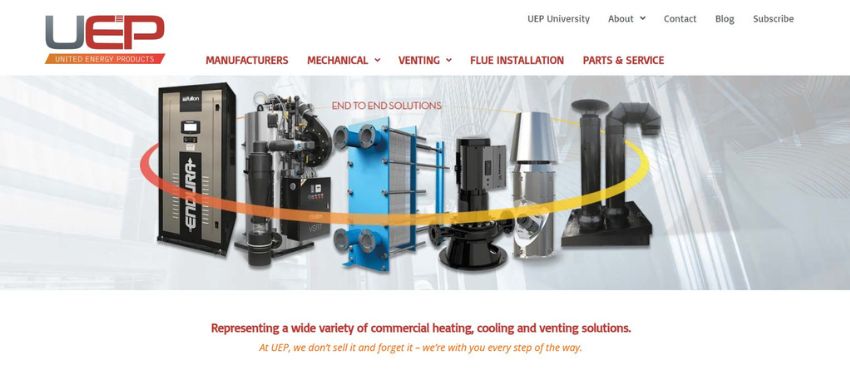Streamline Your Quoting Process
In the world of business, time is money. The quicker and more efficiently you can generate quotes for your customers, the more opportunities you have to close deals and increase your bottom line. This is where the importance of streamlining your quoting process comes into play. At Rep Order Management (ROM), we understand the impact a streamlined quoting process can have on sales and customer satisfaction.
Understanding the Current Quoting Process
Before embarking on the journey to streamline your quoting process, it’s crucial to first understand the current state of affairs. This involves a deep dive into your existing process, mapping out each step from the moment a customer requests a quote to the point where the quote is delivered.
Identifying Customer Touchpoints
The first step in understanding your quoting process is to identify all the customer touchpoints. This includes every interaction a customer has with your business, from the initial inquiry to the final quote delivery. These touchpoints could be through various channels such as email, phone calls, or even face-to-face meetings.
Mapping Out the Quoting Process
Once you’ve identified the customer touchpoints, the next step is to map out the entire quoting process. This involves documenting each step in the process, including who is responsible for each task, what information is needed, and how long each step typically takes.
This process map can be as detailed as necessary, but it should at least include the following steps:
- Receiving the Quote Request: This is when a potential customer contacts your business to request a quote.
- Gathering Information: This involves collecting all the necessary information to prepare the quote. This could include details about the customer’s needs, the products or services they’re interested in, and any specific requirements they may have.
- Preparing the Quote: This is where you calculate the cost of the products or services and prepare the quote document.
- Reviewing the Quote: Before sending the quote to the customer, it’s important to review it for accuracy. This may involve multiple people within your organization, depending on the complexity of the quote.
- Delivering the Quote: The final step is to deliver the quote to the customer. This could be via email, post, or in person.
Identifying Bottlenecks and Areas for Improvement
With the process map in hand, you can now identify any bottlenecks or areas for improvement. These could be steps that take too long, tasks that are prone to errors, or stages where customers often have questions or concerns.
By understanding your current quoting process, you can identify where improvements can be made. This is the first step towards a more efficient and effective quoting process. At ROM, we provide the tools and expertise to help you streamline your quoting process and quickly improve your business performance.

Common Challenges in Quoting
In the realm of business transactions, quoting can often become a complex and cumbersome process. This section aims to dissect the typical hurdles companies face in their quoting procedures.
Inaccurate Data Handling
One of the most prevalent issues is the mishandling of data, leading to inaccurate quotes. Spreadsheets are notorious for inaccurate data. This can stem from outdated pricing information, incorrect product details, or miscalculations in costs. Such inaccuracies not only tarnish the company’s reputation but also result in financial losses.
Time-Consuming Processes
Many businesses still rely on manual quoting methods. These processes are not only time-consuming but also prone to human error, leading to inefficiencies and delays in response times to customers.
Lack of Customization
In today’s market, customers expect personalized experiences. A significant challenge for businesses is providing quotes that are tailored to individual customer needs and preferences, which is often difficult with traditional quoting methods.
Integration Issues
For companies using digital tools, a common challenge is the integration of quoting software with other business systems like CRM and ERP. Lack of seamless integration can lead to disjointed workflows and data discrepancies.
Practical Steps to Streamline Quoting
The first step towards streamlining the quoting process is embracing automation. Automated quoting tools can significantly reduce the time spent on generating quotes, minimize errors, and ensure consistency in pricing and product information.
Implementing Quoting Software
Investing in robust quoting software can transform the quoting process. These tools can handle complex pricing models, integrate with existing business systems, and provide real-time data, ensuring accuracy and efficiency.
Customization Capabilities
To address the need for personalized customer experiences, businesses should seek solutions that offer customization capabilities. This includes adjustable templates, dynamic pricing options, and the ability to include personalized messages or terms.
Streamlining Data Management
Efficient data management is crucial for accurate quoting. This involves regular updates of product information, pricing, and customer data to ensure that quotes are based on the most current information. Implementing a centralized data system can significantly reduce errors and improve the accuracy of quotes.

The Power of Automation in Quoting
Automation has revolutionized many business processes, and quoting is no exception. By leveraging the power of automation, businesses can significantly streamline their quoting process, saving time, reducing errors, and improving consistency.
Speed and Efficiency with Automation
One of the primary benefits of automation is the speed and efficiency it brings to the quoting process. With automated tools, what used to take hours can now be done in a matter of minutes.
For instance, ROM’s Quote Builder is designed to expedite the quoting process. It allows you to create quotes quickly by reusing information from old quotes or by using pre-built templates. This means you no longer have to start from scratch every time you need to create a quote, saving you valuable time.
Consistency and Accuracy
Automation also ensures consistency and accuracy in your quotes. When quotes are created manually, there’s always a risk of human error, such as typos or miscalculations. However, with automated quoting tools, these errors can be significantly reduced.
ROM’s Quote Builder, for example, ensures that all your quotes follow the same format and structure. This not only makes your quotes look professional but also makes it easier for your customers to understand them. Moreover, because the Quote Builder reuses information from old quotes or templates, you can be confident that the pricing and other details in your quotes are accurate.
Collaboration and Accessibility
Automation can also enhance collaboration and accessibility. With ROM’s Quote Builder, your entire team can access and use the same quoting tool, ensuring everyone is on the same page. This is particularly beneficial for businesses with multiple salespeople or teams who need to collaborate on quotes.
Automation is a powerful tool for streamlining the quoting process. It offers numerous benefits, including speed, efficiency, consistency, accuracy, and improved collaboration. By leveraging the power of automation, businesses can transform their quoting process, ultimately leading to improved sales performance and customer satisfaction.
Overcoming Bottlenecks in the Quoting Process
Bottlenecks in the quoting process can slow down your sales cycle and frustrate your customers. These can occur at various stages, such as when quotes need to be reviewed and approved by multiple people within your organization.
ROM’s integrated order creation system, AccuTrack, can help overcome these bottlenecks. By creating orders as easily as clicking on your won quote items, you can significantly speed up the process and eliminate potential delays.
Remember, the journey to a streamlined quoting process begins with understanding your current process and identifying areas for improvement. So why wait? Start your journey today and see the difference it can make for your business.

The Quote-to-Cash Cycle: An In-depth Look
The quote-to-cash cycle is a key aspect of any sales process. It encompasses all the steps from creating a quote to receiving payment from the customer.
Understanding and streamlining this cycle is crucial for improving business performance. A streamlined quote-to-cash cycle reduces the time it takes to close a sale, improves cash flow, and enhances customer satisfaction.
At ROM, we’ve developed integrated solutions like AccuTrack that streamline the quote-to-cash cycle. By automating tasks like order creation and tracking financials related to each sales order in real time, we help businesses improve their efficiency and profitability.
Technology is a powerful tool for streamlining the quoting process. By leveraging tools like personalized quotes and by understanding and optimizing the quote-to-cash cycle, businesses can significantly improve their sales process and overall performance.
Getting Quotes Approved Faster
In many organizations, the process of getting quotes approved can be a significant bottleneck. This is especially true when multiple internal approvals are required, each adding to the time it takes to get a quote out to a customer. However, with the right technology, this process can be significantly expedited.
The Challenge of Multiple Approvals
In many businesses, especially those dealing with complex products or services, quotes often need to be reviewed and approved by several people before they can be sent to the customer. This could include sales managers, product specialists, or even finance teams. Each layer of approval adds time to the quoting process, potentially delaying the delivery of the quote to the customer.
The Role of Technology in Streamlining Approvals
This is where technology comes into play. With the right tools, businesses can automate and streamline the approval process, significantly reducing the time it takes to get a quote approved.
At ROM, we offer integrated solutions that allow for real time tracking and management of quote approvals. With our tools, you can see at a glance where each quote is in the approval process, who needs to approve it next, and how long it’s been since the quote was submitted for approval. This transparency helps to keep everyone accountable and ensures that quotes don’t get stuck in the approval process.
The Impact of Faster Approvals
By streamlining approvals, businesses can significantly reduce quote approval time. This has several benefits. Firstly, it means that quotes can be sent to customers faster, increasing the chances of winning the sale. Secondly, it frees up your sales team to focus on what they do best – selling, rather than chasing approvals.
In conclusion, getting quotes approved faster is a crucial aspect of streamlining the quoting process. With the right technology, businesses can automate and expedite approvals, leading to faster quote delivery, increased sales, and a more efficient sales process.

Streamlining Order Management
Order management is a critical component of the sales process. It involves tracking and managing the orders your company receives, ensuring accuracy, and maintaining visibility throughout the process.
A streamlined order management process can prevent downstream issues such as order errors, delays, and customer dissatisfaction. At ROM, our order management solutions provide real-time access to every detail on every job, ensuring accuracy and visibility in your order management process.
Our tools allow you to track all your bids in real time, pull critical information about the status of every piece of equipment you quoted, and manage all the details of every opportunity. This not only optimizes your time but also helps you bid with confidence.
By streamlining your quote approval and order management processes, you can significantly improve your sales cycle, reduce errors, and enhance customer satisfaction. At ROM, we’re committed to providing solutions that help you achieve these goals.
The Importance of Flexibility in the Quoting Process
In the ever-evolving landscape of business, the ability to adapt and be flexible is paramount. This is particularly true when it comes to the quote-to-cash cycle. Businesses vary in their operations, customer base, product or service offerings, and internal processes. Therefore, a rigid, one-size-fits-all approach to the quote-to-cash cycle may not always meet the specific requirements of different businesses.
Adaptable Solutions for Diverse Needs
At ROM, we understand this need for flexibility. Our solutions are designed to be adaptable, allowing you to tailor the quote-to-cash cycle to meet your specific business needs. Whether you deal with simple, straightforward quotes or complex, multi-tiered quotes involving various products and services, our tools can be customized to suit your unique requirements.
For instance, our Quote Builder allows you to create custom quote templates that reflect your business’s specific needs. This means you can include the information that’s most relevant to your customers and your business, ensuring your quotes are both comprehensive and personalized.

Case Study: Successful Implementation of a Streamlined Quoting Process
To illustrate the impact of a streamlined quoting process, let’s look at a real-world example. United Energy Products, a leading manufacturer rep firm, was looking for a way to improve their quoting process.
They turned to ROM for a solution. With our tools, United Energy Products was able to increase bid time and accuracy, stay on top of their sales pipeline, and increase their win ratio.
In their own words, “RepOrderManagement is key to our sales and estimating operations. It is designed specifically for Manufacturers Reps – so they understand our business. With RepOrderManagement, we bid quickly and accurately, and the bid calendar means we stay on top of our pipeline. Lastly, their team is very responsive, and we know we can count on them when we need them. I recommend RepOrderManagement for any MR that is looking for a better way to quote and increase their win ratio!”
This case study clearly demonstrates the impact of a streamlined quoting process on sales and customer relationships. By implementing ROM’s solutions, United Energy Products was able to improve its business performance and customer satisfaction. In conclusion, flexibility and integration are key to a streamlined quoting process. By implementing these principles, along with the right tools, businesses can significantly improve their quoting process and overall business performance.
Conclusion
In this blog, we’ve explored the importance of streamlining your quoting process and how it can significantly impact your sales and customer satisfaction. We’ve discussed the role of technology, the importance of a flexible quote-to-cash cycle, and the need for effective contract management.
We’ve also highlighted the importance of understanding your current quoting process and identifying areas for improvement. We encourage all businesses to evaluate their current processes and consider how they can be improved, and as always, ROM is here to help. Reach out today and see how ROM can help you revolutionize your quoting process.
FAQs
Streamlining a quote involves using technology to automate and speed up the process, integrating with CRM and accounting systems, and ensuring flexibility to meet specific business needs.
Improvements can be made by mapping out your current process, identifying bottlenecks, and implementing solutions like those offered by ROM to automate and streamline the process.
The steps typically include receiving a request for a quote, determining pricing, creating the quote, getting internal approvals, and sending the quote to the customer.
The quotation process is important as it determines the price a customer is willing to pay for your product or service. It’s a key factor in winning sales and satisfying customers.
A quotation management system can automate and streamline the quoting process, reduce errors, speed up quote approval time, and enhance customer satisfaction.
Quotations are used to provide a price estimate to customers, present a formal offer, provide a record of agreed prices, help in planning and forecasting, and serve as legal documents in case of disputes.
